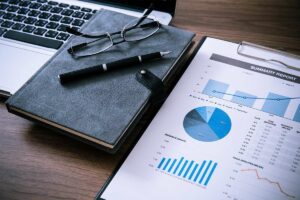
The company would be considered safe, and a higher credit rating would be allocated to the company by the rating agency if the company doesn’t fail to make promised interest and principal payments. The balances in liability accounts are nearly always credit balances and will be reported on the balance sheet as either current https://www.bookstime.com/ liabilities or noncurrent (or long-term) liabilities. An expense is the cost of operations that a company incurs to generate revenue. Unlike assets and liabilities, expenses are related to revenue, and both are listed on a company’s income statement. The equation to calculate net income is revenues minus expenses.
In most cases, lenders and investors will use this ratio to compare your company to another company. A lower debt to capital ratio usually means that a company is a safer investment, whereas a higher ratio means it’s a riskier bet. Current liabilities are debts that you have to pay back within the next 12 months. Xero does not provide accounting, tax, business or legal advice.
How Do Liabilities Relate to Assets and Equity?
There are also cases where there is a possibility that a business may have a liability. You should record a contingent liability if it is probable that a loss will occur, and you can reasonably estimate the amount of the loss. If a contingent liability is only possible, or if the amount cannot be estimated, then it is (at most) only noted in the disclosures that accompany the financial statements. Examples of contingent liabilities are the outcome of a lawsuit, a government investigation, or the threat of expropriation.
For example, the balance in the bank account of ABCCompany is $1,000 but the bank allows the company to withdraw $1,200 from their bank account. Notes payable is a kind of written promissory note prepared when a lender lends some money to the borrower. Through that promissory note, the borrower promises the lender to repay liabilities in accounting the money and the predetermined interest until the specified time. The articles and research support materials available on this site are educational and are not intended to be investment or tax advice. All such information is provided solely for convenience purposes only and all users thereof should be guided accordingly.
Pay
If more expenses are accrued in the current period, that means lower expenses and higher revenue increased liability in the current period (a form of aggressive accounting). Non-current liabilities are of longer duration, and liquidity is not a concern for the company. Still, the long-term liabilities amount the company has to pay is generally higher or huge than short-term liabilities payments.

It’s important to contact the IRS and make arrangements to voluntarily pay the tax due. If taxpayers don’t contact the IRS, the IRS may take one or more of the following actions to collect the taxes. Tax bills quickly get worse with time as fees, penalties and interest accumulate. In addition, if a taxpayer doesn’t respond, it can lead to more serious IRS collection activity such as liens or levies. The Internal Revenue Service will automatically waive failure to pay penalties on assessed taxes less than $100,000 for tax years 2020 or 2021. Taxpayers who had a balance due for tax years 2020 and/or 2021 and did not receive balance due reminder notices due to the pandemic-related pause, may be eligible for automatic penalty relief.
Resources for Your Growing Business
In accounting, everything has a debit and a credit entry, and if the two sides aren’t equal, there is a problem. Examples of your non-current liabilities include your loans, mortgage, and deferred tax. The liabilities of your business are all of the business’ operating costs and financial obligations. They are the costs you keep an eye on to make sure you can cover them.

Besides his extensive derivative trading expertise, Adam is an expert in economics and behavioral finance. Adam received his master’s in economics from The New School for Social Research and his Ph.D. from the University of Wisconsin-Madison in sociology. He is a CFA charterholder as well as holding FINRA Series 7, 55 & 63 licenses. He currently researches and teaches economic sociology and the social studies of finance at the Hebrew University in Jerusalem. Bob from Bob’s Donut Shoppe Inc takes out a $100,000 loan from a bank over 10 years.
